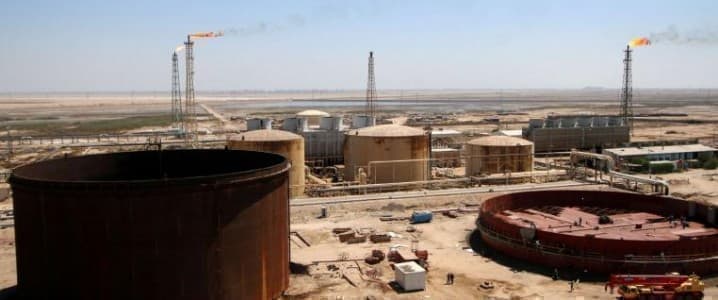Iraq’s Oil Minister, Ihsan Abdul-Jabbar, announced last week that the country plans to increase its oil production capacity to 8 million barrels per day (bpd) by 2029, compared to current production of around 3.8 million bpd that factors in OPEC-mandated cuts.
Based on its vast oil resources there is no insurmountable reason why this output level should not be attained by that time or indeed even the 9 million bpd or 11 million bpd that were posited by the International Energy Agency in its 2012 production scenario analysis for Iraq. Even the lower of these two figures would allow Iraq to overtake Saudi Arabia as the number one oil producer in the Middle East, with the Kingdom producing just 8.17 million bpd on average from 1973 to this year. To reach these new output goals, Iraq announced last week initiatives including boosting the production from the key field of Majnoon and the sale of ExxonMobil’s stake in another major field, West Qurna 1. In both cases, though, the real reasons why Iraq has been hamstrung in reaching its oil production potential over decades remain in place and, if not addressed, the country will never reach these targets.
Located around 60 kilometres to the north east of the main southern export terminal of Basra, the Majnoon site is one of the largest oil fields in the world, with an estimated 38 billion barrels of oil in place. Due to the legacy of both the Iran-Iraq War and the U.S.’s incursions, from when the licence on the field was awarded on 11 December 2009 by the Iraq government to Shell Iraq Petroleum Development (in conjunction with its Malaysian partner, Petronas, and Iraq’s Missan Oil Company) it took nearly 18 months simply to clear 28 square kilometres of land of explosives, prior to constructing and opening the first well. Production was then formally restarted on 20 September 2013 and, within a short timeframe, the consortium had managed to boost output to the 175,000 bpd first commercial production target, which was also the threshold for cost-recovery payments for Shell. By the end of the first quarter of 2014, the field was churning out an average of 210,000 bpd and the first shipment of crude oil to Shell Trading occurred on 8 April that year. The original oil production targets for the Shell-led consortium on Majnoon were first production target of 175,000 bpd and plateau production of 1.8 million bpd. The new plan announced last week is to raise output from Majnoon from the current 130,000 bpd to 450,000 bpd within three years after investment of US$1.15 billion.
Read More at the Source: https://oilprice.com/Energy/Crude-Oil/Could-Iraq-Really-Become-OPECs-Largest-Oil-Producer.html

